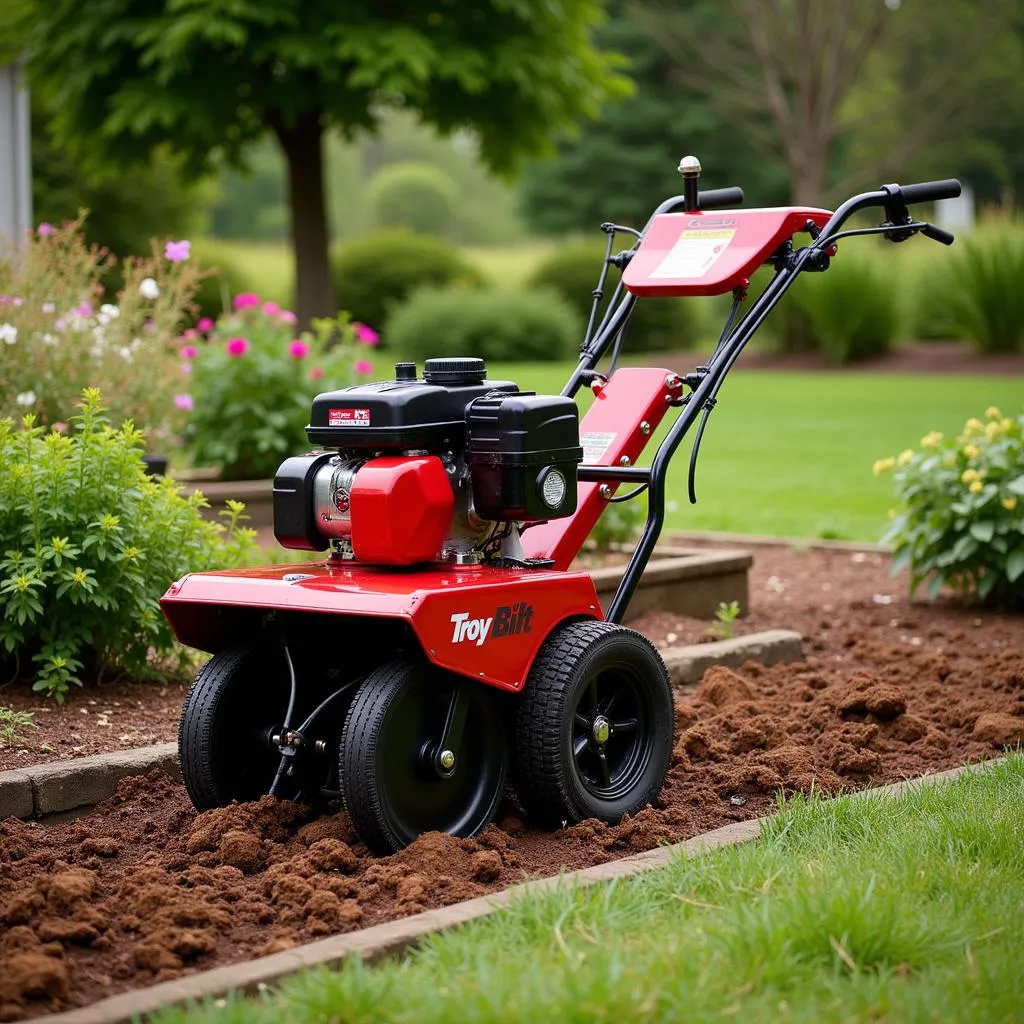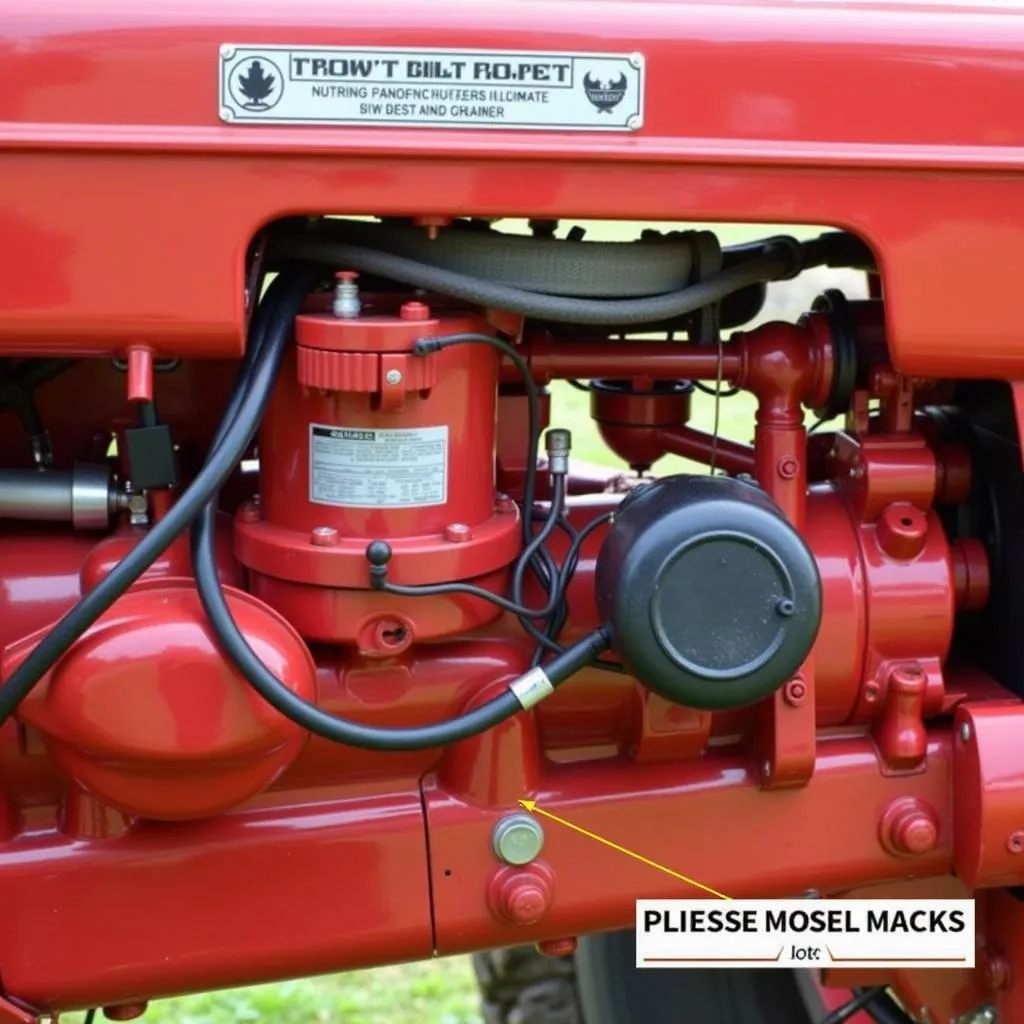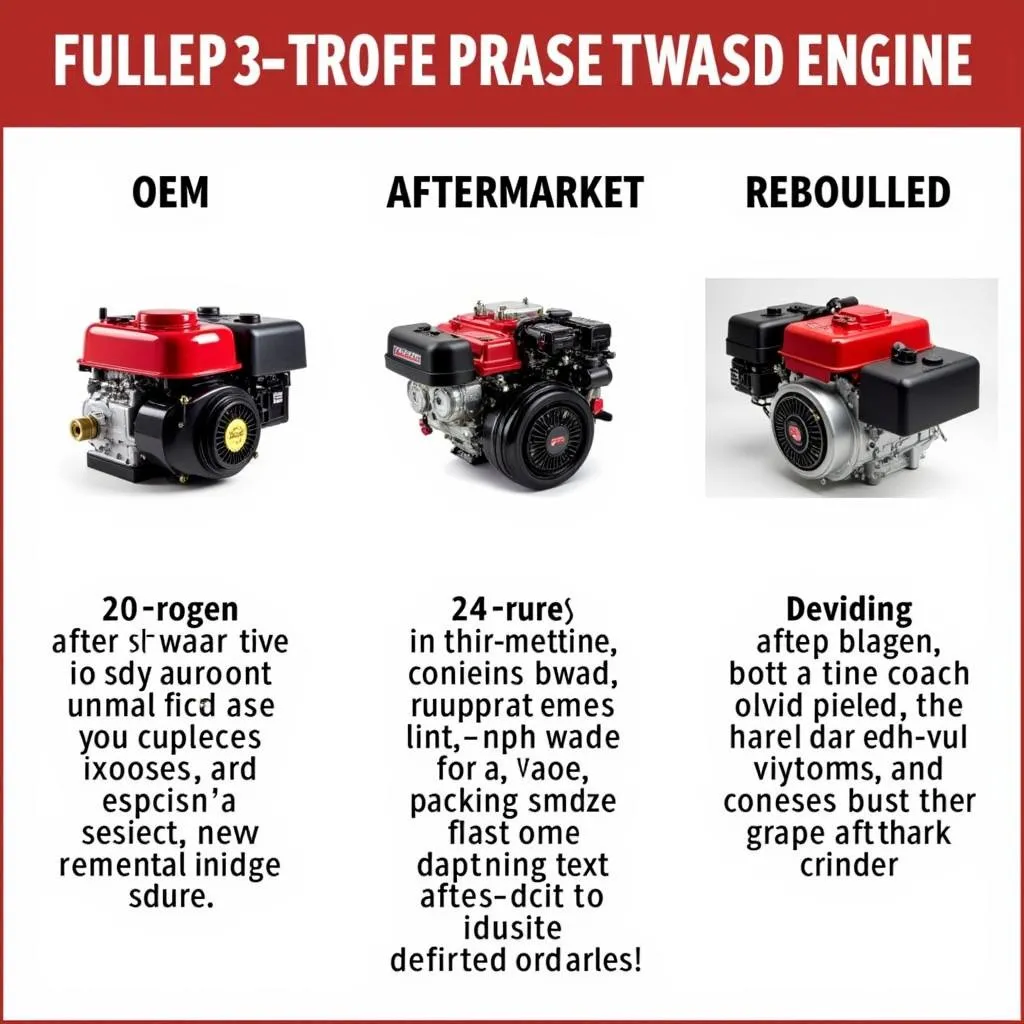Finding the right replacement engine for your Troy-Bilt Horse tiller can feel like navigating a minefield of technical specs and confusing model numbers. But don’t worry, we’re here to help! This comprehensive guide will walk you through everything you need to know about Troy-Bilt Horse replacement engines, ensuring you get your trusty tiller back in top shape and ready to tackle any gardening challenge.
 Troy-Bilt Horse Tiller in Action
Troy-Bilt Horse Tiller in Action
Understanding Your Troy-Bilt Horse Tiller
Before you even think about a replacement engine, it’s crucial to identify your Troy-Bilt Horse tiller model. This information is vital for finding a compatible engine. You can typically locate the model number on a data plate or sticker somewhere on the tiller’s frame. Look for a combination of letters and numbers, like “12A33C400.”
Once you have your model number, the next step is to determine the engine specifications. These usually include:
- Engine Brand: Common brands found on Troy-Bilt Horse tillers include Briggs & Stratton and Honda.
- Engine Model: Each engine brand has a specific model number, such as “Briggs & Stratton 1150 Series.”
- Horsepower (HP): This indicates the engine’s power output.
- Engine Displacement: Measured in cubic centimeters (cc), this refers to the engine’s cylinder volume.
 Identifying Tiller Model Number
Identifying Tiller Model Number
Choosing the Right Troy-Bilt Horse Replacement Engine
Armed with your tiller and engine details, you can now explore replacement options. Here’s a breakdown of your choices:
-
OEM (Original Equipment Manufacturer) Engines: These engines are identical to the original engine that came with your tiller. They offer guaranteed compatibility and usually come with a warranty. However, OEM engines tend to be the priciest option.
-
Aftermarket Engines: These engines are manufactured by third-party companies and designed to be compatible with specific Troy-Bilt Horse tiller models. Aftermarket engines often provide a more budget-friendly alternative to OEM engines while still delivering reliable performance.
-
Rebuilt or Remanufactured Engines: If you’re on a tight budget, rebuilt or remanufactured engines can be a viable option. These engines are previously used engines that have been disassembled, inspected, cleaned, and repaired to restore functionality.
Things to Consider When Choosing a Replacement Engine:
-
Engine Power: Make sure the horsepower and engine displacement of the replacement engine match or slightly exceed the original engine’s specifications. Choosing a less powerful engine can result in performance issues.
-
Shaft Size and Configuration: Double-check that the crankshaft diameter and length of the replacement engine align with your tiller’s requirements. Pay attention to the shaft configuration, which can be either horizontal or vertical.
-
Mounting Pattern: Ensure the mounting bolt holes on the replacement engine match those on your Troy-Bilt Horse tiller frame.
-
Warranty and Support: Always inquire about the warranty offered with the replacement engine. A reputable seller should provide at least a one-year warranty.
 Engine Options Comparison
Engine Options Comparison
Expert Insight
“Choosing the right replacement engine is crucial for extending the life of your Troy-Bilt Horse tiller,” advises John Smith, a seasoned mechanic with over 20 years of experience working on small engines. “While OEM engines offer guaranteed compatibility, don’t shy away from reputable aftermarket brands that often provide excellent value for money.”
Installing Your New Engine
Once you’ve chosen your replacement engine, it’s time for the installation. While you can tackle this task yourself if you have mechanical experience, it’s often best to seek professional assistance. Improper installation can damage your new engine or even pose safety risks.
FAQs About Troy-Bilt Horse Replacement Engines
1. Can I use a different brand engine for my Troy-Bilt Horse tiller?
While it’s technically possible, it’s highly recommended to stick with the same engine brand as the original. Using a different brand can lead to compatibility issues and void any existing warranty.
2. Where can I find my Troy-Bilt Horse tiller’s engine specifications?
You can usually find this information in your tiller’s user manual or on the manufacturer’s website.
3. How much does a Troy-Bilt Horse replacement engine cost?
The cost varies depending on factors like engine brand, horsepower, and whether you choose OEM, aftermarket, or rebuilt. Expect to pay anywhere from a few hundred dollars to over a thousand for a new engine.
4. How long does it take to replace a Troy-Bilt Horse tiller engine?
For a professional mechanic, the replacement process usually takes a few hours.
5. Can I upgrade to a more powerful engine?
While tempting, it’s generally not recommended to significantly exceed the original engine’s horsepower rating as it can put undue stress on the tiller’s transmission and other components.
Get Your Troy-Bilt Horse Tiller Back in Action
Finding and installing the right Troy-Bilt Horse replacement engine doesn’t have to be a daunting task. With the information in this guide, you can make informed decisions and get your tiller back to its former glory, ready to tackle any gardening project you throw its way.
Remember, if you have any doubts or need assistance, don’t hesitate to contact a qualified mechanic specializing in small engine repair. For further assistance, contact Justus Horses USA at 0772127271, email us at [email protected], or visit our location at QGM2+WX2, Vị Trung, Vị Thuỷ, Hậu Giang, Vietnam. We’re here to help 24/7.